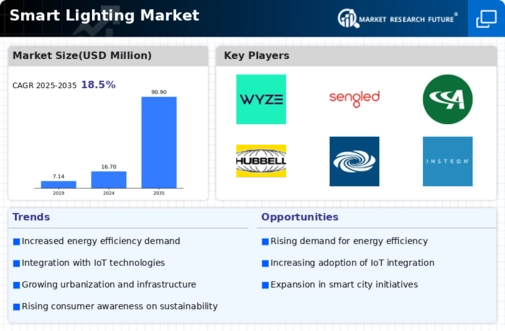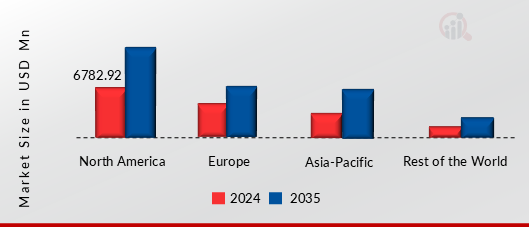Smart Lighting Market Summary
As per Market Research Future Analysis, the Global Smart Lighting Market was valued at USD 19.15 Million in 2024 and is projected to reach USD 143.88 Million by 2035, growing at a CAGR of 20.12% from 2025 to 2035. Key drivers include the rise of smart city projects, advancements in integrated lighting control systems, and government regulations promoting LED usage. The market is segmented into new installations, which dominate with 68.19% market share, and retrofit installations. The hardware segment, particularly lights and luminaires, is expected to see significant growth due to the popularity of energy-efficient LED technology. North America leads the market with a 41.5% share in 2024, driven by early adoption and strong industry presence.
Key Market Trends & Highlights
Key trends driving the Smart Lighting Market include technological advancements and regulatory support.
- Smart Lighting Market Size in 2024: USD 19.15 Million
- Projected Market Size by 2035: USD 143.88 Million
- CAGR from 2025 to 2035: 20.12%
- North America holds 41.5% market share in 2024
Market Size & Forecast
| 2024 Market Size | USD 19.15 Million |
| 2035 Market Size | USD 143.88 Million |
| CAGR (2025-2035) | 20.12% |
Major Players
Control4 Corp. (Snap One LLC), Lutron Electronics Co. Inc., Signify Holding, Wyze Labs Inc., Sengled, Inter IKEA Holding, Acuity Brands Inc., Hubbell Incorporated, Crestron Electronics Inc.


















Leave a Comment